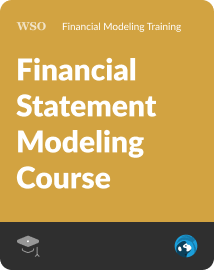Spot Price
The cost incurred to buy any asset.
What is a Spot Price?
The spot price is the cost you'll incur to buy any asset right now, including stocks, commodities, and currency.
When investing in stocks, you probably won't hear the phrase "spot price" very frequently because equities usually trade at the spot price (SP). When you pay the advertised amount for a stock, the deal is completed right away. Therefore, there is no need to distinguish between different pricing types.
If you trade commodities, which are tangible products like gold, silver, oil, wheat, and timber, you'll probably hear about spot pricing.
Both the spot market, which is the market for immediate delivery, and the futures market, which is the market for future delivery, are used for the trading of commodities.
In a commodity trade, the seller formally agrees to provide the stated amount of the commodity at the agreed-upon price.
Understanding Spot Price
The spot price, sometimes known as the "immediate price," plays a significant role in setting the value of futures contracts.
The market is considered to be in "contango" if the SP for a commodity is less than the futures price, indicating that the price of the commodity is anticipated to increase.
The market is said to be in "backwardation" when SP is higher than the futures price, meaning the commodity's price is predicted to decline. As the contract approaches expiration, the two prices frequently converge.
For investors, forecasting fluctuations in spot prices may be challenging. There are endless variables that might influence commodity pricing, including nearly unpredictable factors like weather, political issues, and labor strikes.
Investing in an index fund that follows a significant commodity index may be a less hazardous choice for individual investors looking to diversify their portfolios with commodities than investing directly.
Spot Price Example
Let's take an example where the price of a barrel of crude oil is $68. However, the price of its futures contract with a one-year settlement date is set at $64 per barrel, indicating that the market anticipated a decline in oil prices.
That day, the spot price of crude oil would be $68; the contract price, which would be based, in part, on the spot price, would be $64.
Another illustration would be gold, which is now priced at $1,780 per ounce but whose futures contract is for $1,786 one year from now. Investors anticipate an increase in gold prices in this situation. The contract price would be $1,786 while the spot price would be $1,780.
Spot Price vs. Future Price
In contrast to the spot price, which refers to an asset's present price, the future price refers to the asset's price at a future date.
A futures contract binds the owner of an item and a prospective buyer to sell the asset at a predetermined future date and for a predetermined price.
When a futures contract expires, the buyer must assume ownership of the underlying asset. However, the buyer can sell the futures contract at any moment before the expiration date, absolving them of the obligation.
An American-style options contract, for example, allows the owner the right, but not the obligation, to purchase or sell the underlying asset at any time before the contract's expiration date.
A futures contract, on the other hand, does not. The exchange of cash for commodities must occur on the maturity date of the future.
The Commodity Futures Trading Commission (CFTC) is in charge of regulating commodity futures. Commodities trade on both the spot and futures markets.
The futures price for commodities is calculated using the commodity's current spot price plus any additional expenses the seller will incur between the time of the sale and the contract's expiration, such as storage and shipping charges, interest, and insurance.
The formula below is typically used to determine commodity futures prices:
A futures contract’s price is calculated as follows:
(Spot Price + Storage Costs) * 2.71828 (Risk-free Interest Rate * Time to Maturity)
Weather, political unrest, or labor strikes can all affect an asset's current price at some point in the future.
A wheat farmer may enter a futures contract at the start of a growing season to sell their whole harvest at the conclusion of that season. This effectively protects them against risks relating to shifts in price.
A baking firm may purchase the farmer's futures contract as a hedge against an increase in the price per bushel of wheat.
Depending on whether they believe the price of wheat will increase or decrease, speculators may purchase or sell the same futures contract.
Three outcomes are conceivable at the futures contract's expiration date:
- The price on the contract is lower than the current SP.
- The futures price is higher than the SP.
- The price on the contract is the same as the current SP.
Futures contracts are highly leveraged, which means that an investor only has to put up a tiny portion of the contract's value, known as a margin, in order to invest.
The value of the futures contract the investor is purchasing, the investor's creditworthiness, and the broker's policies all influence how much the broker will advance the investor. If an investor's wager is unsuccessful, they may be liable for much more than the margin amount.









or Want to Sign up with your social account?